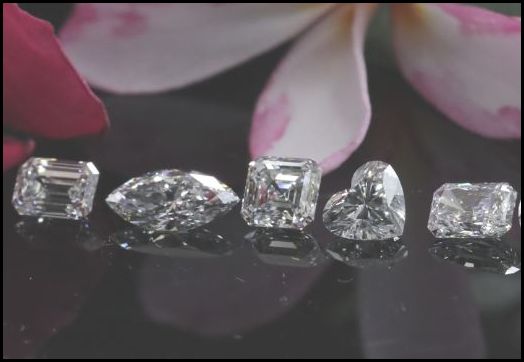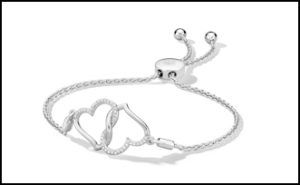Still Buying Diamonds & Fine Jewelry
Consumers are adapting to the new normal, and diamonds continue to retain broad appeal across consumer segments.
Those are the key findings the De Beers Group revealed in its 2020 Diamond Insight report. Released in November, it collates data from the diamond producer’s consumer research after COVID-19 erupted on the scene.
Research finds two in five (38 percent) consumers choose diamond jewelry as the gift they most desire to give or receive. Since travel, which has long been the main competitor to diamonds as a means of creating memories, has been so restricted, the market for diamonds has benefited.
“We’re thrilled people are buying diamonds,” shares Russell Weisenberg, vice president of sales for Aneri Jewels in New York City, acknowledging that lack of travel and not buying other things like apparel or electronics have given people more disposable income and jewelry is such a great gift to give and receive.
Consumers buy fine jewelry to celebrate or reward themselves, to give as a gift to someone they love, and for no reason. These motivators are true across gender, age, marital status, and household income, according to the latest study by MVI Marketing (MVEye) of 1,027 diamond jewelry consumers in October.
The survey revealed that while diamond jewelry consumers usually like to shop and buy in-store (61 percent) during COVID, 36 percent are now shopping online, 28 percent are visiting the store, 17 percent are arranging private in-store appointments, and 11 percent are visiting the store, then buying online later.
Earth Mined
“Our customers sell to middle America, and we’re seeing an uptick in new jewelry sales,” says Weisenberg, who notes that consumers buy better quality diamond engagement rings. He concurs that classic styles drive most diamond fashion jewelry businesses, underscoring that good design is critical.
Valerie Fletcher, vice president of design and product development for Original Design Inc. (ODI), says that in classic jewelry, she sees trends for bigger diamonds, graduated diamond styles, and diamond-intensive designs that are more freeform and show less metal.
“ODI has had a lot of requests for larger, diamond-intensive hoops and vertical/drop earrings, with round, pear or marquise diamonds; all diamond with minimal gold showing,” Fletcher shares. “This is interesting because pre-COVID, we were doing well with mini studs that would be stacked up the ear. So this is a complete reversal.”
Fletcher also notes that dangling pendants are always popular in neckwear, but ODI also sees greater interest in chevron and smile-style necklaces. “In bands, it’s the same story, very diamond intensive and no metal showing or straight edges. Fancies mixed with rounds, or large and small rounds in garland looks, giving that lacy edge, are trending. And enhancers are still our No. 1 band category. Again, with the graduated or lacy looks doing well.”
Lab-Grown
MVEye’s study in October, sponsored by the International Grown Diamond Association (IGDA) and Instore Magazine, revealed considerable gains in consumer awareness and acceptance of lab-grown diamonds in fine jewelry.
Consumer awareness has grown organically, without significant marketing investment, from 9 percent a decade ago to 80 percent in 2020 across age groups, genders, and income levels.
Jewelry consumers also are asking for lab-grown diamonds. In a separate trade survey conducted this fall, 62 percent of the 138 retail respondents found that anywhere from 5 percent to 50 percent of their customers are asking for lab-grown diamonds. Moreover, consumers expect the product to be among the fine jewelry offerings where they shop, with 37 percent expecting salespeople to include lab-grown diamonds in their diamond presentation.
Lab-grown diamond attributes that resonate most for nearly a third of jewelry consumers are that lab-grown diamond jewelry can cost 30 percent less than jewelry set with mined diamonds and also that they can get a 30 percent larger sized lab-grown diamond for the same price as a smaller mined diamond.
While size and quality may motivate some shoppers, ethics also plays a significant role, says Monica McDaniels, communications manager for the San Marcos, California, lab-grown gem brand Chatham. “Conversations with consumers have revolved around making ethical buying decisions. They felt this was a more appropriate choice after being educated on the difference between lab and mined.”
Most surveyed retailers who sell lab-grown diamonds feature them in finished engagement rings and loose for semi-mounts. More than half cited engagement and wedding rings as bestselling products in the category.
But Cora-Lee Colaizzi, director of marketing and catalogs and senior merchandiser for Quality Gold in Fairfield, also sees several categories beyond bridal that show demand and growth. “The basics are growing, like stud earrings, solitaire necklaces, and tennis bracelets set with lab-grown diamonds. Men’s jewelry, both fashion and wedding bands, also has great potential.”
The study found that the retail sweet spot for lab-grown diamond bridal is $2,000-$4,000; for lab-grown diamond fashion jewelry, it is $800-$1,000.
Let Them Coexist
When it comes to earth-mined and lab-grown diamonds, David Arnold, general manager of Daniel’s Jewelers in Killeen, Texas, is bullish on the customer decision. Displaying his loose diamonds, earth-mined and lab-grown, side-by-side and well-labeled, with trained staff, he wants his customers to choose what they want and feel good about it.
“That’s the aha-moment,” Arnold says. “Letting your customers decide with their pocketbook, social awareness, or whatever inspires them to say yes to something.”
Arnold opted to have them coexist so his customers would get the full breadth of diamonds. He encourages jewelers to step around the counter and put themselves in the consumers’ spot, figure out what they want to know about, and say yes to what they want, not what’s comfortable for the jeweler.
Roopam Jain, president of the branded division for Jewelmark in New York City, thinks there is a place for lab-grown diamonds in both the bridal and fashion diamond categories but emphasizes that it depends significantly on how jewelers present the products. “Do you prefer diamonds from underground or above ground? A gift from the earth or science?”
As the emphasis on responsible and ethical production grows, and with diversity and inclusion high on the agenda of Millennial and Gen-Z consumers, brands/jewelers are well advised to incorporate transparency, authenticity, and purpose as a critical part of their strategy for all their diamond products.















